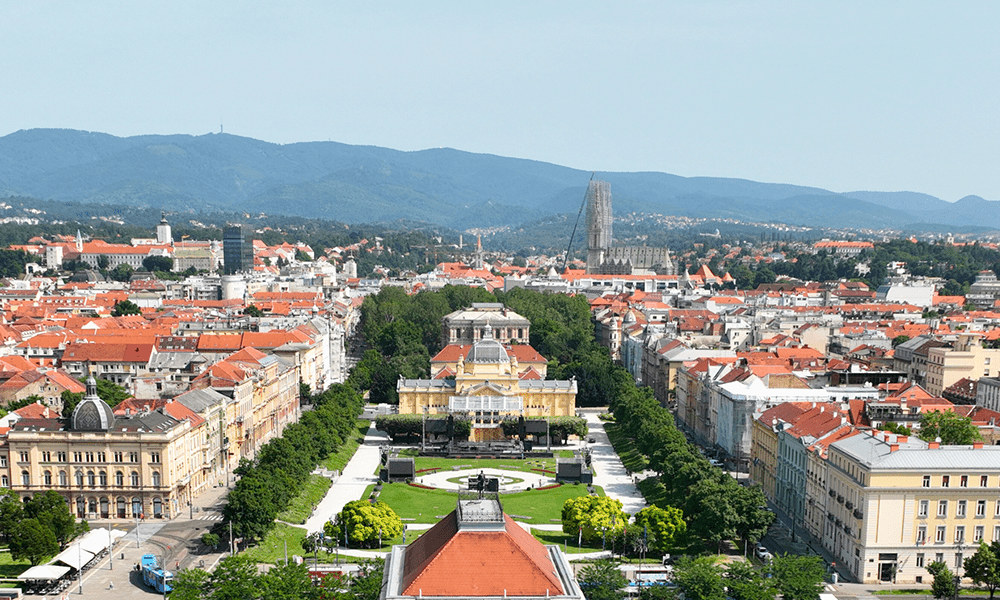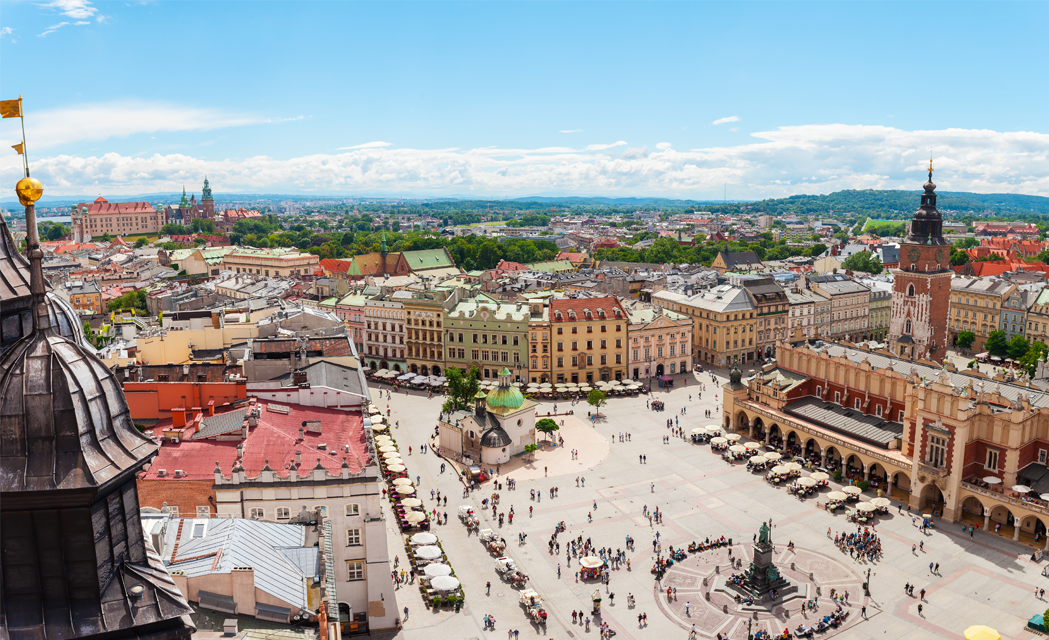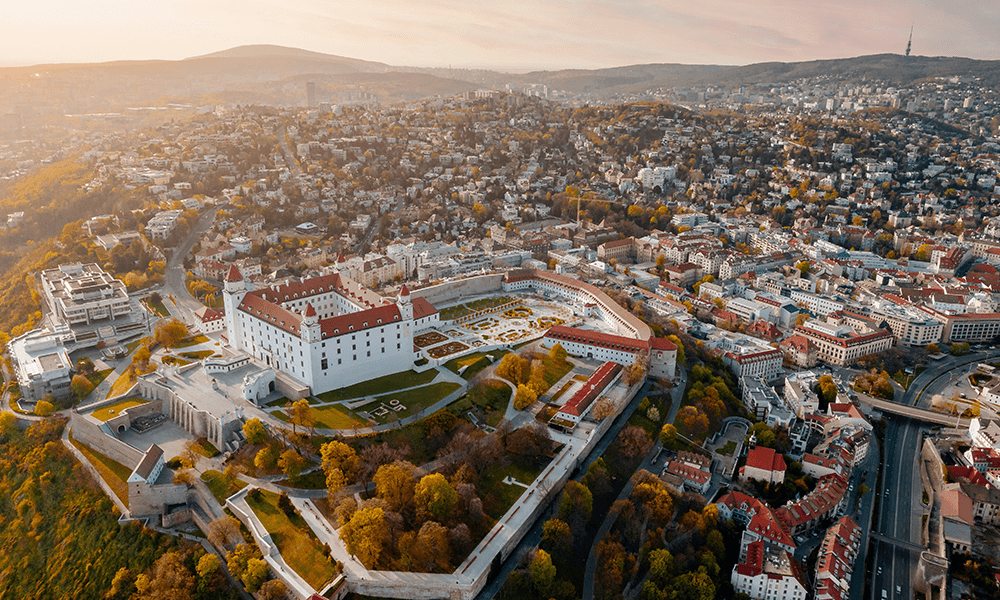Author: Barbara Jarkiewicz
Stories from Pilot Cities: Zagreb is one of the 112 cities participating in the EU Mission to deliver 100 climate-neutral and smart cities, and the Pilot Cities Programme – a component of the Mission that focuses on exploring and testing pathways to rapid decarbonisation over a two-year period.
In the heart of Croatia, Zagreb is showing how the path to climate neutrality can begin in the most unexpected places. By embedding climate goals into every layer of governance, transforming their financial approach and transforming neglected courtyards into vibrant green hubs, the Croatian capital is turning everyday spaces into engines of systemic change.
At first glance, Zagreb already looks like a green city. Two-thirds of its administrative area is covered by forests and farmland. The River Sava cuts a lush corridor through the city, and the northern skyline is dominated by the forested slopes of Medvednica mountain. But as climate pressures intensify and summer nights grow hotter, Zagreb’s leaders know that preserving this greenery is no longer enough and climate action is needed.
“We are heating up very fast. In the last two decades, heat stress has increased by 88 per cent compared to the previous ones. It’s a combination of rapid urbanisation and climate change. We have to find new ways to make the city liveable again,” said Miljenko Sedlar, Head of Climate at REGEA, working with the City of Zagreb.
That understanding has become the cornerstone of Zagreb’s journey towards climate neutrality, one grounded in interconnected systems rather than isolated actions.
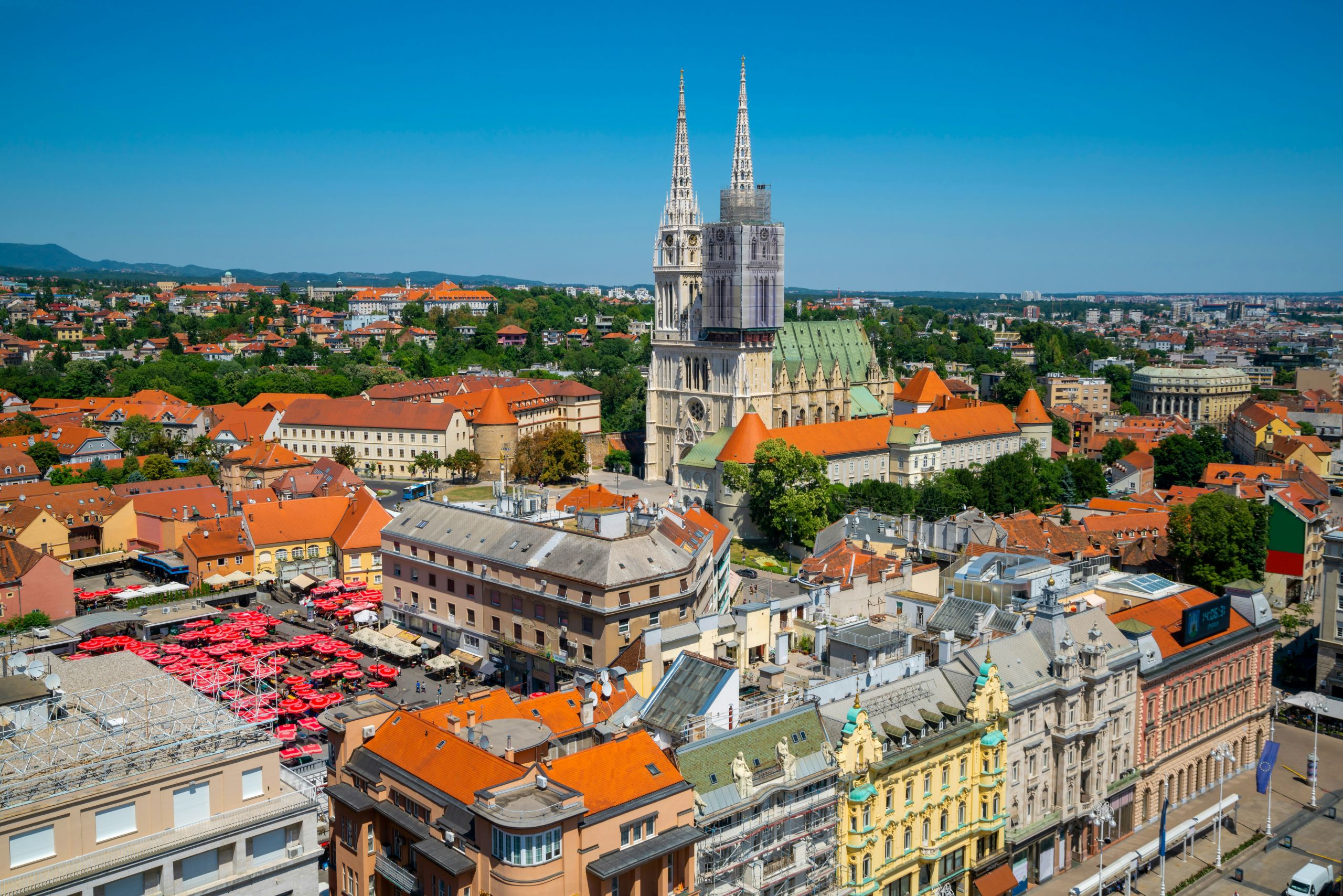
A Systemic Approach to Urban Transformation
Zagreb’s Climate City Contract, developed through the NetZeroCities programme, sets out a vision that links mitigation and adaptation, embedding climate goals directly into how the city is planned, financed, and managed.
“We realised we cannot achieve decarbonisation through standalone or sporadic measures. Our approach had to be systemic,” Sedlar explained.
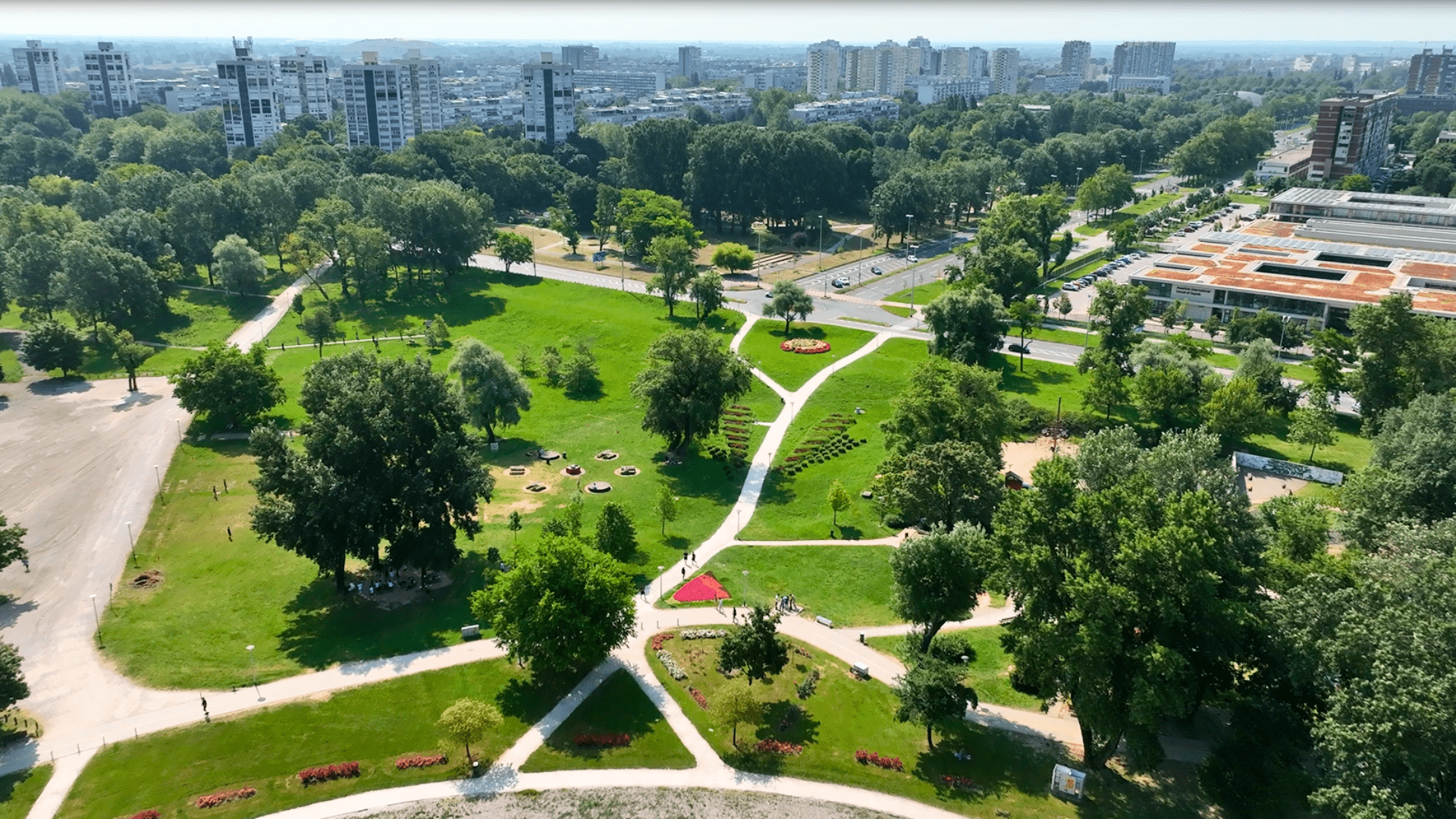
© City of Zagreb
In practice, that means addressing the root causes of emissions through the city’s core systems, from the way urban areas are designed and built to how budgets and regulations support climate goals. The city’s Green Urban Plan integrates decarbonisation pathways into zoning, introducing emission-free districts and banning natural gas in specific areas.
“In Zagreb, you no longer build according to national standards. You build above them. New guidelines for architects and engineers are raising construction standards in line with the European Green Deal,” Sedlar said
It also means rethinking how public money is spent. Zagreb is piloting green budgeting with Croatia’s Ministry of Finance, tagging every budget line to understand how much public money supports climate goals.
“Four years ago, around 11 per cent of our budget went to climate action. Now it’s 15.7 per cent. But more important is that we can finally see where that money goes,” Sedlar said.
The Climate-Neutral Greening Hub
Zagreb’s systemic change also takes shape through the Pilot Cities Programme. At the centre of the initiative stands the Climate-Neutral Greening Hub, a one-stop shop that provides citizens with guidance, data, and tools to support their own green transformations. The hub will operate both online and on the ground, linked to Zagreb’s Smart City platform, which already offers open data on solar potential, green areas and energy use.
“The hub will make it easier for people to find information and take action. It connects to our Energy Centre and other departments so that residents, associations, and companies can all play a part in the transition,” Ivančević explained.
This civic infrastructure ensures that local engagement will continue well beyond the lifespan of a single project. By embedding participation into the city’s digital and administrative systems, Zagreb is turning citizen collaboration into a permanent part of how it governs climate action.
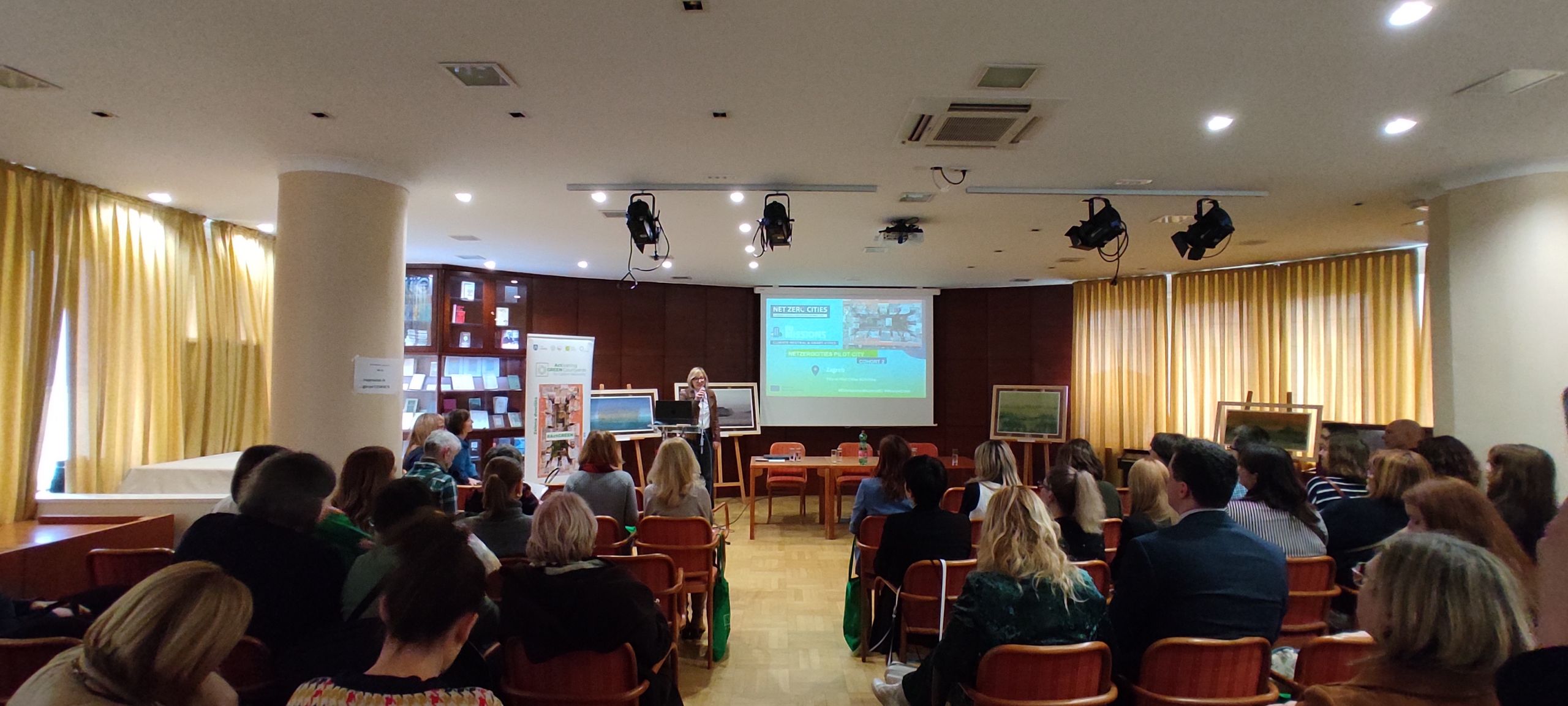
© City of Zagreb / Education the way to sustainable and green city ActGREEN
Nature at the Heart of Urban Planning
The project is also serving as a testing ground for Nature-Based Solutions at scale. A new carbon sink calculator, currently in development, is set to measure how much greenhouse gas absorption can be achieved through local greening.
“We want to use this data for future planning. We’re also developing citywide guidelines that make Nature-Based Solutions and green infrastructure the core of every reconstruction or new build,” said Sedlar.
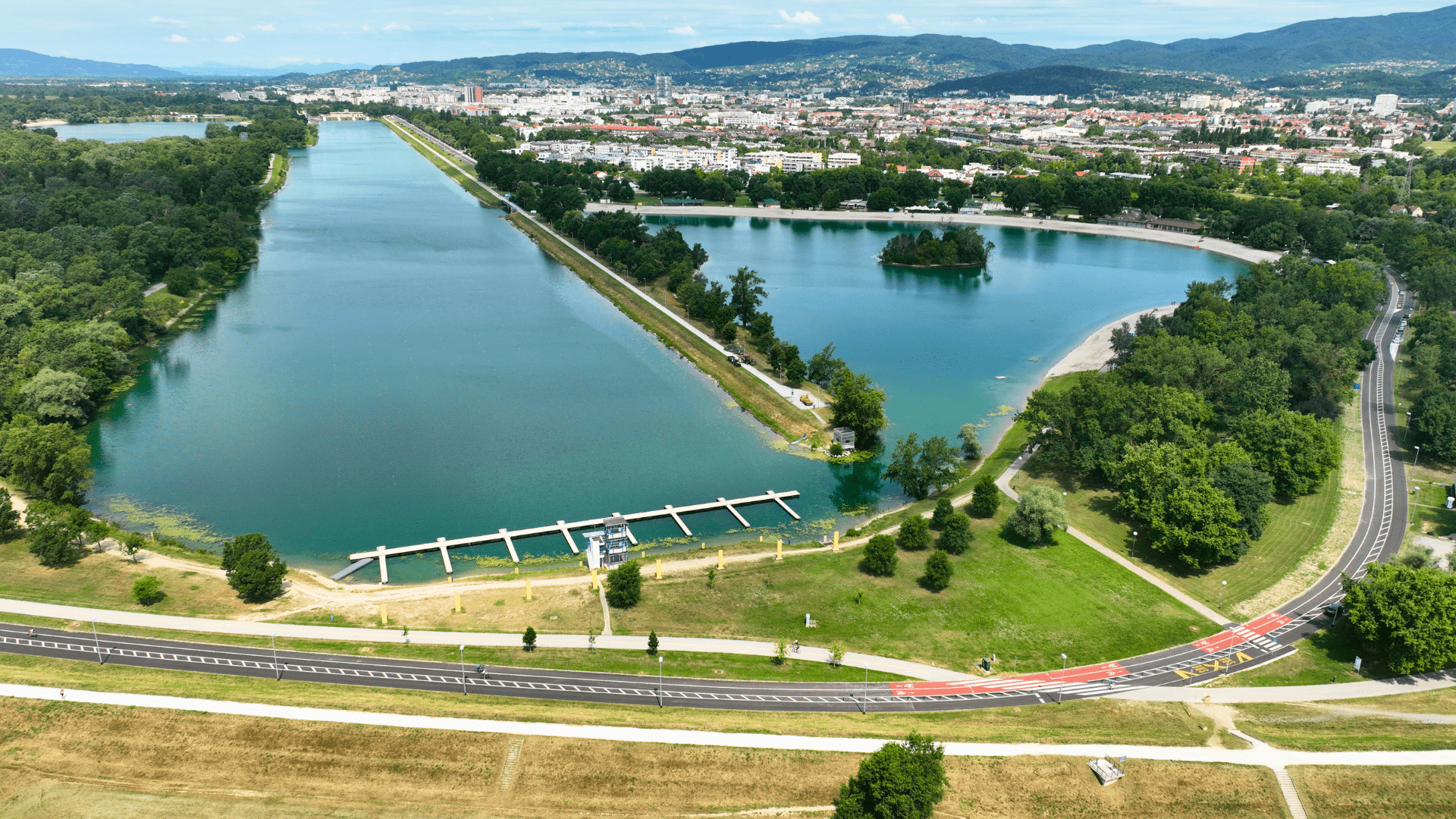
© City of Zagreb
This effort goes beyond adding greenery. It changes the logic of urban development.
“Our idea is to make green infrastructure an integral part of design, not an afterthought. Only by doing that can we achieve real transformation,” Sedlar explained.
Zagreb’s Climate City Contract reflects this philosophy by bringing mitigation and adaptation under one single framework. Every new or renovated piece of infrastructure is now required to be climate-proofed, with Nature-Based Solutions prioritised as standard practice.
Greening from the Ground Up
To combat urban heat islands, the Pilot initiative, Activating Green Courtyards for Carbon Neutrality, turns private and semi-public spaces into small-scale climate solutions powered by nature-based solutions.
“We are using the funds to finance the greening of private or semi-private courtyards. These inner courtyards, built in the 19th and 20th centuries, were neglected and caused urban heat island effects. Now, with citizen participation, which is the cornerstone of the Pilot project, they’re being transformed into green, permeable, and climate-friendly spaces,” explained Nebojša Ivančević, Senior Expert Advisor from the City of Zagreb.
Its success lies in a clear and practical design that citizens can easily engage with. The city introduced a Greening Act that clearly defines conditions and procedures for residents who wish to apply. The response exceeded expectations with over 270 applications submitted in the first public call.

© City of Zagreb / Workshop: my green courtyard ActGREEN
“Eighteen courtyards are being financed this year from the city budget, and seven through EU funds. Applicants are usually building representatives, groups of residents rather than individuals, and many are older citizens who have shown remarkable enthusiasm,” Ivančević said.
These renovated courtyards replace concrete and asphalt with trees, permeable and sun-reflecting surfaces, compost facilities, urban furniture, LED lighting, and systems for rainwater reuse, practical Nature-Based Solutions that cool neighbourhoods, manage water, and make shared spaces more liveable.
The interventions lower surface temperatures, mitigate flooding, and enhance social cohesion.
“It’s a participatory approach that improves quality of life while reducing carbon footprints,” Ivančević said.
From Learning to Leading
For the city team, the Pilot Cities Programme has been more than just a source of funding. It has become a laboratory for collaboration.
“The sensemaking activities and opportunities for collaboration were invaluable,” Ivančević said. “We exchanged experiences with other cities, gained new ideas, and learned how others manage similar challenges. It has been a large-scale learning opportunity.”

© City of Zagreb / Workshop: my green courtyard ActGREEN
Sedlar added that the process reshaped how Zagreb manages its own climate strategy. The city now updates its Climate City Contract annually to reflect the fast-changing climate and policy landscape.
“The speed of change is enormous. That’s why we treat the Climate City Contract as a living document, an innovation lab where pilots and feedback loops help us adapt continuously,” he said.
This approach is already influencing national policy. Zagreb’s integrated energy and climate planning model, first tested locally, is now being adopted in Croatia’s new law on spatial planning.
A Model for Europe
Zagreb’s journey offers a glimpse of what systemic urban transformation can look like, where spatial planning, finance, design, and citizen engagement all reinforce and complement one another. The city is turning its courtyards into carbon sinks, empowering communities to lead change, and embedding climate action into the very structure of governance.
“We’ve realised that innovation has to happen across every field. The key is to integrate it into the city’s everyday processes,” Sedlar said.
Zagreb’s story proves that a green city is defined not by the number of its parks but by the systems that sustain them.
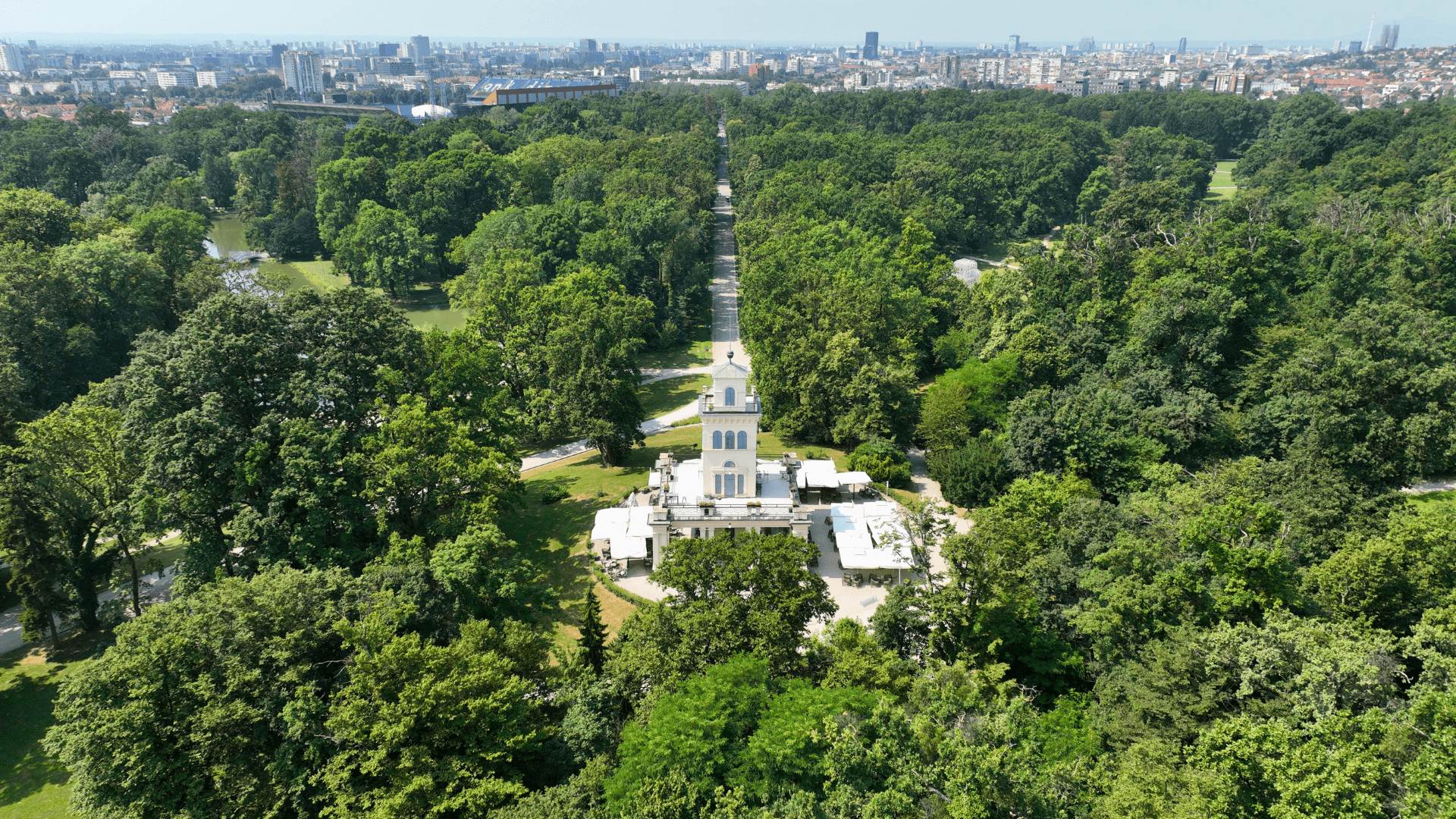
© City of Zagreb
